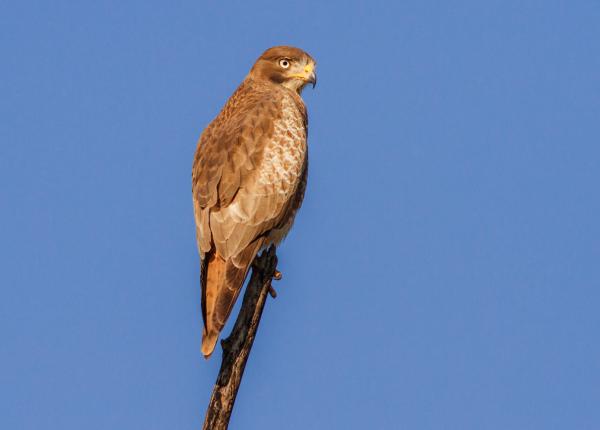Did You Know?
- The White-eyed Buzzard has a distinctive pale yellow, whitish iris
- This species often flicks its tail while in flight
How The Peregrine Fund is Helping
Though The Peregrine Fund does not work directly with White-eyed Buzzard, our efforts in scientific research, habitat conservation, education, and community development help conserve birds of prey around the world. We also supply literature to researchers from our avian research library, which helps scientists around the world gather and share important information on raptor conservation. Additionally, our support of the Global Raptor Information Network gives raptor researchers tools to more efficiently conduct their own studies while contributing to a global program. It also provides citizen scientists a way to participate in raptor science and conservation.
Where They Live
The White-eyed Buzzard is found in south Asia, in the countries of India, Iran, Pakistan, Nepal, Bangladesh, and Myanmar. It makes its home in dry, open habitats, as well as wooded and cultivated areas.
Why They Need Our Help
This hawk is categorized as a species of Least Concern.
What They Eat
The White-eyed Buzzard feeds primarily on small mammals, rodents in particular. They will also feed on reptiles and amphibians, as well as crabs and insects, such as locusts and grasshoppers. It will also sometimes prey upon birds. It will hunt both in flight and while walking on the ground.
Nests, Eggs, and Young
The White-eyed Buzzard constructs a stick nest in a tall tree. Both the male and female work together to construct the nest, which they place in a fork of a tree, or along a branch with thick foliage. The pair will build a new nest every year. The female will lay between 2 to 4 eggs. The female is responsible for incubating the eggs. Once the nestlings hatch, they are covered in white down. Both the male and female work together to feed their young. There is still a lot more that scientists need to learn about the breeding biology and behavior of the White-eyed Buzzard, including how long the young stay in the nest and how long they remain dependent on their parents.
White-eyed Buzzard and the World Center for Birds of Prey
The World Center for Birds of Prey offers fun ways to learn about birds of prey. Interactive activities, tours, interesting videos and a children's room with activities from coloring sheets to quizzes to costumes are all available for our guests. We also have knowledgeable, on-site staff to answer any questions you may have about White-eyed Buzzards or any other bird of prey.
References:
Clark, W.S. and G. M. Kirwan (2020). White-eyed Buzzard (Butastur teesa), version 1.0. In Birds of the World (J. del Hoyo, A. Elliott, J. Sargatal, D. A. Christie, and E. de Juana, Editors). Cornell Lab of Ornithology, Ithaca, NY, USA. https://doi.org/10.2173/bow.whebuz1.01
Global Raptor Information Network. 2021. Species account: White-eyed Buzzard Butastur teesa. Downloaded from http://www.globalraptors.org on 18 Dec. 2021









